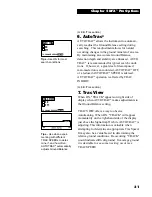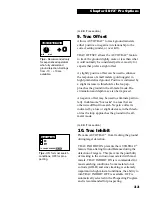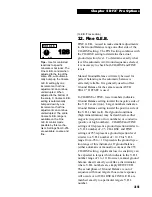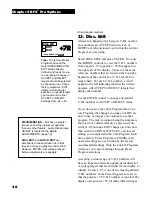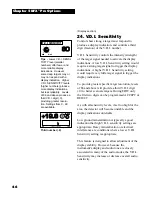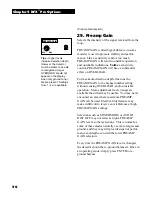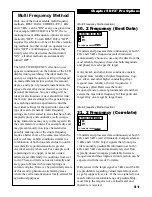
40
Chapter 5 DFX
™
Pro Options
17. Recovery Speed
Speeds target responses, so several targets that are
close together can each respond.
When a metal is detected, it takes a fraction of a
second for the detector to process the signal before
it can respond to another metal target nearby. The
time it takes to process the first metal target signal
so that the second metal target signal can respond
is called RECOVERY SPEED.
There are advantages and disadvantages to fast
(high numbers) and slow (low numbers) RECOV-
ERY SPEEDS. Faster RECOVERY SPEEDs work
well in high trash areas. However, they will have
some difficulties with very deep targets as well as
double responses on shallow targets. Slower
RECOVERY SPEEDs do not work very well in
high trash areas. However, they will have better
responses on very deep targets. Slower speeds also
have more definitive discrimination sounds. A
custom setting needs to be found that suits the
preferences of the individual and the conditions in
the area. As a general rule, the closer together the
metal targets are in an area, the faster the recovery
speed should be. The more spacing between tar-
gets, the slower the speed should be. Don't use the
fast speed if you don't need to.
Sweep speed (page 43) and more significantly,
Ground Filtering adjustments (page 44) will also
dramatically improve or degrade performance in
high trash.
30
RECOVERY SPEED
MIN
MAX
(Discrimination section)
Tips - Use faster speeds
(higher numbers) for trashy
areas, slower speeds
(lower numbers) for low
trash areas and/or im-
proved discrimination.
Settings from 1 - 40 are
available.






